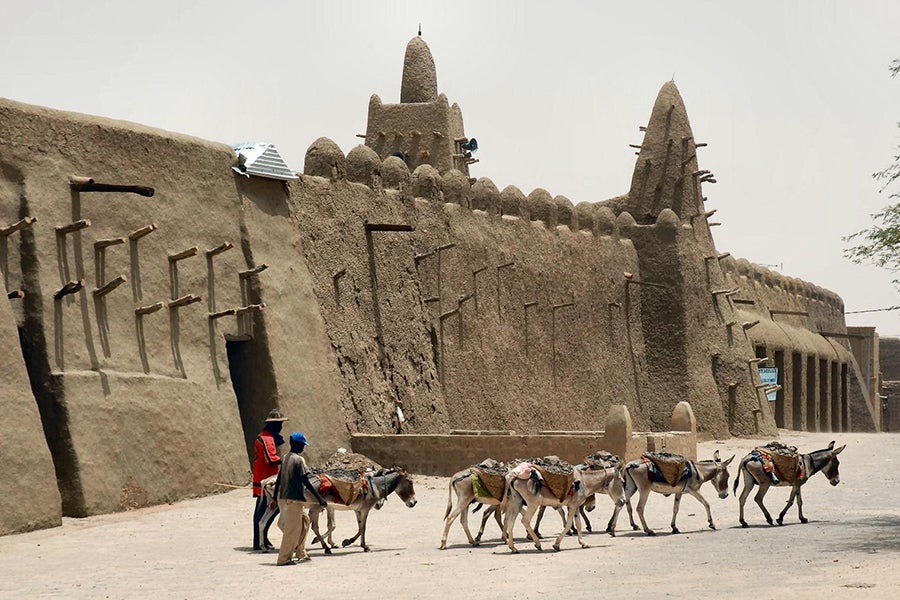Djingareyber Mosque of Timbuktu:
Expression and Innovation at the Saharan Crossroads
Ashley Miller
Synopsis:
This presentation examines the history and meaning of Djingareyber Mosque, the Great Mosque of Timbuktu in Mali. Constructed beginning in the fourteenth century under the patronage of Mansa Musa (ruler of the Mali empire from 1312 to 1337), the mosque was the product of an empire and its elite population’s relationship to an increasingly global economy and political field in which the Islamic faith was shared across world regions. The mosque’s construction and visual details express connections to Islamic architectures in North Africa and the Levant, as well as a deep resonance with local expressive practices and worldviews, Muslim and otherwise. Continually renovated and restored until today, Djingareyber attests to the architectural and cultural innovation entailed in expressing meaning at the proverbial “crossroads”: of a vast commercial network like the medieval trans-Saharan trade, multiple faiths and cultural ideas, global transformations provoked by climate change, and, more recently, the radicalization of Islamic thought and practice.
References:
Aradeon, Susan. “Al-Sahili: The Historians’ Myth of Architectural Technology Transfer from North Africa,” Journal des Africanistes 59/1-2 (1989): 99–131. ![]()
Apotsos, Michelle. Architecture, Islam, and Identity in West Africa: Lessons from Larabanga. New York: Routledge, 2016. ![]()
“Djingareyber Mosque: A Site of the Golden Age of Islam in Africa” (3D model, plans, and images of site). Zamani Project Website. Accessed September 21, 2023. ![]()
Paoletti, Giulia. “Djingareyber Mosque of Timbuktu.” In Sahel: Art and Empires on the Shores of the Sahara, ed. Alisa LaGamma, 138–139. New York: The Metropolitan Museum of Art, 2020. ![]()
Poissonnier, Bertrand. “The Great Mosque of Timbuktu: Seven Centuries of Earthen Architecture.” In Earthen Architecture in Muslim Cultures: Historical and Anthropological Perspectives, ed. Stéphane Pradines, 22–36. Leiden: Brill, 2018. ![]()
Prussin, Labelle. “Sub-Saharan West Africa.” In The Mosque: History, Architectural Development & Regional Diversity, ed. Martin Frishman, Hasan-Uddin Khan, and Mohammad Al-Asad, 180–193. London: Thames and Hudson, 1994. ![]()
Citation:
Ashley Miller, “Djingareyber Mosque of Timbuktu: Expression and Innovation at the Saharan Crossroads,” Khamseen: Islamic Art History Online, published 15 February 2024.

Ashley Miller is Assistant Curator of African Art at the University of Michigan Museum of Art (UMMA). She specializes in the material and visual cultures of 19th– and 20th-century northwest Africa, with a broader interest in issues of heritage and collective memory, the history of museums in Africa, Muslim expressive cultures of Africa, and the politics and representation of identity in colonial and postcolonial societies. Currently, she is at work on a major exhibition entitled Ghana 1957, which explores Ghana’s position as a locus for transregional, pan-African artistic exchange in the decades following African independence from colonial rule.


